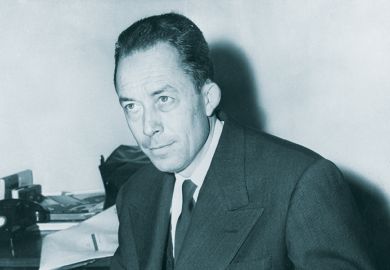In spite of its high price (certainly not justified by the indifferent quality of its 55 black and white and eight colour illustrations), this is no work of reference even though it summarises much recent scholarship on Hinduism and its art. Rather, it is a useful and easy-to-read introduction to a complex subject aimed largely at educational courses. Students and general readers will be grateful to the author for guiding them through the bewildering apparatus of Hindu religious symbols, ritual practices, sacred texts and mythological icons, making reference to specific examples of temples, sculptures and paintings wherever possible. Though Heather Elgood attempts to bridge the gap between studies on Hindu religion and surveys of Indian temples, she is generally more concerned with the textual and interpretive background to Hindu architecture and art than the historical and regional determinants of form and style. The book is strong on the general principles of Hinduism, especially in its early phases of development, but is weak on the evolution of religious architecture and sculpture, and virtually ignores painting altogether, all of which is somewhat surprising considering that the author is an art historian.
In her introduction, Elgood offers an overview of the origins and development of Hinduism, with a particular emphasis on sacred texts. The next chapter focuses on the origin and symbolic foundations of Hindu imagery, with frequent references to "ancient" literary sources such as the Vishnudharmottara Purana (misspelt on pages 30, 89 and 90). Hindu iconography forms the topic of another chapter in which the author concentrates on the imagery of the principal divinities and their diverse scholarly interpretations in a quest to uncover symbolic meanings. The discussion of village deities is a welcome and insightful contribution to general works on Hindu art.
Hindu sacred architecture forms a separate chapter, and here Elgood returns to the problems of origins and broad symbolic issues. The various components of the temple are examined, but often more attention is paid to particular sculptural motifs, such as the sexually conjoined couple known as maithuna , than to architectural techniques or styles. Many readers will appreciate the account of the ritual operation of a temple which is given here. A more historical approach is evident in the next chapter, which presents a somewhat breakneck survey of more than 1,000 years of royal patronage. This includes notices of particular historical figures and the different purposes of sponsorship. More satisfactory is the chapter focusing on village and tribal patrons. Taking a quasi-ethnographic approach, Elgood offers mini-discussions on fertility and prosperity, penance and propitiation. Again, however, insufficient attention is paid to actual imagery, whether painted on mud walls, cast in bronze or carved in wood.
The author's conclusion reiterates her concern with meaning in Hindu religious art. A glossary of Indian names and terms is provided, together with an up-to-date bibliography.
George Michell is an architectural and art historian specialising in India.
Hinduism and the Religious Arts
Author - Heather Elgood
ISBN - 0 304 33820 6
Publisher - Cassell
Price - £55.00
Pages - 246
Register to continue
Why register?
- Registration is free and only takes a moment
- Once registered, you can read 3 articles a month
- Sign up for our newsletter
Subscribe
Or subscribe for unlimited access to:
- Unlimited access to news, views, insights & reviews
- Digital editions
- Digital access to THE’s university and college rankings analysis
Already registered or a current subscriber? Login



